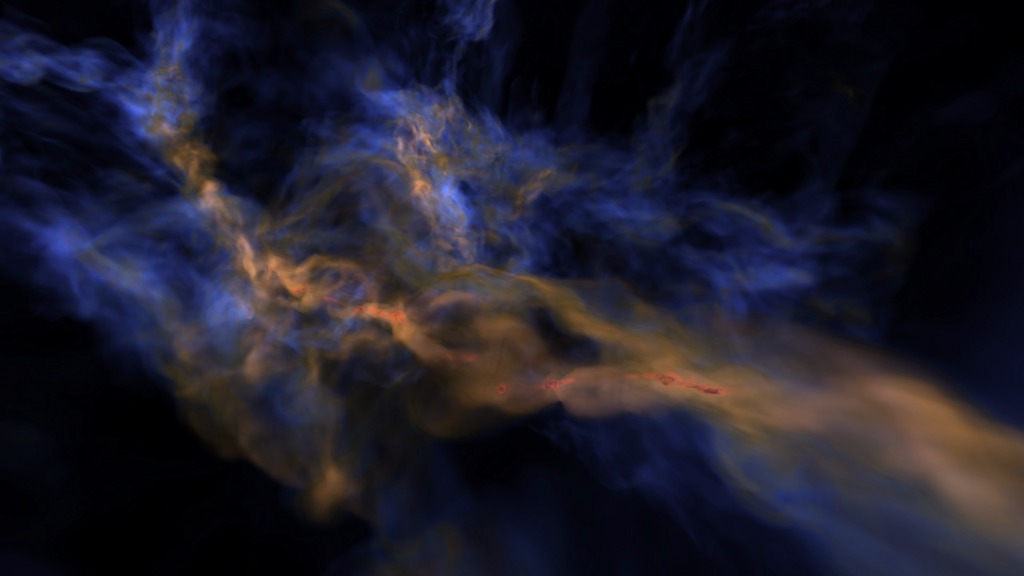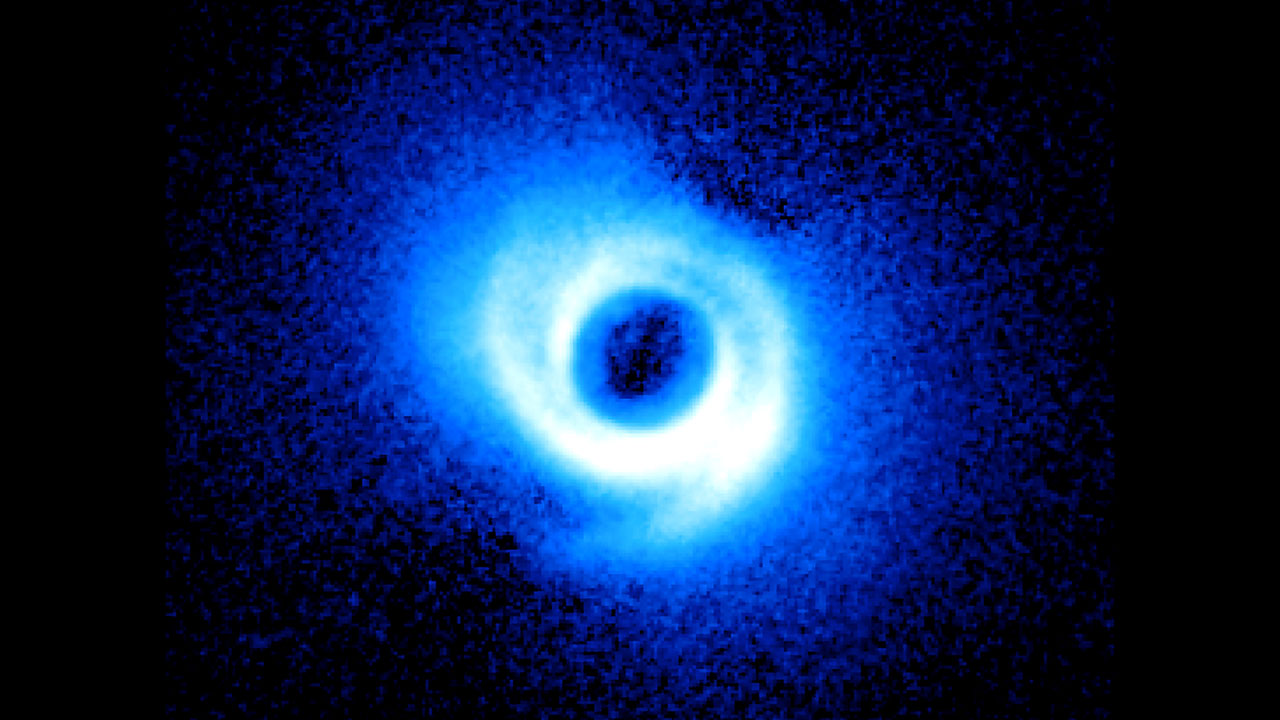Spiral Arms Point to Possible Planets in a Star's Dusty Disk
A new image of the disk of gas and dust around a sun-like star is the first to show spiral-arm-like structures. These features may provide clues to the presence of embedded but as-yet-unseen planets.
The newly imaged disk surrounds SAO 206462, an 8.7-magnitude star located about 456 light-years away in the constellation Lupus. Astronomers estimate that the system is only about 9 million years old. The gas-rich disk spans some 14 billion miles, which is more than twice the size of Pluto's orbit in our own solar system.
The Subaru near-infrared image reveals a pair of spiral features arcing along the outer disk. Theoretical models show that a single embedded planet may produce a spiral arm on each side of a disk. The structures around SAO 206462 do not form a matched pair, suggesting the presence of two unseen worlds, one for each arm.
Simulations of young stellar systems suggest that planets embedded in a circumstellar disk can produce many distinctive structures, including rings, gaps and spiral arms. This video compares computer simulations of hypothetical systems to the Subaru image of SAO 206462.
Credit: NASA Goddard Space Flight Center/NCSA

Two spiral arms emerge from the gas-rich disk around SAO 206462, a young star in the constellation Lupus. This image, acquired by the Subaru Telescope and its HiCIAO instrument, is the first to show spiral arms in a circumstellar disk. The disk itself is some 14 billion miles across, or about twice the size of Pluto's orbit in our own solar system.
Credit: NAOJ/Subaru

Two spiral arms emerge from the gas-rich disk around SAO 206462, a young star in the constellation Lupus. This image, acquired by the Subaru Telescope and its HiCIAO instrument, is the first to show spiral arms in a circumstellar disk. The disk itself is some 14 billion miles across, or about twice the size of Pluto's orbit in our own solar system. No Labels.
Credit: NAOJ/Subaru
For More Information
Credits
Please give credit for this item to:
NASA/Goddard Space Flight Center. However, individual elements should be credited as indicated.
-
Animators
- Donna Cox (AVL NCSA/University of Illinois)
- AJ Christensen (AVL NCSA/University of Illinois)
- Matthew Hall (AVL NCSA/University of Illinois)
- Alex Betts (AVL NCSA/University of Illinois)
- Stuart Levy (AVL NCSA/University of Illinois)
- Robert Patterson (AVL NCSA/University of Illinois)
-
Video editor
- Scott Wiessinger (USRA)
-
Producer
- Scott Wiessinger (USRA)
-
Writer
- Francis Reddy (SPSYS)
Tapes
The media on this page originally appeared on the following tapes:-
Spiral Arms Point to Possible Planets in a Star's Dusty Disk
(ID: 2011112)
Wednesday, October 19, 2011 at 4:00AM
Produced by - Robert Crippen (NASA)
Release date
This page was originally published on Wednesday, October 19, 2011.
This page was last updated on Sunday, January 5, 2025 at 12:16 AM EST.

